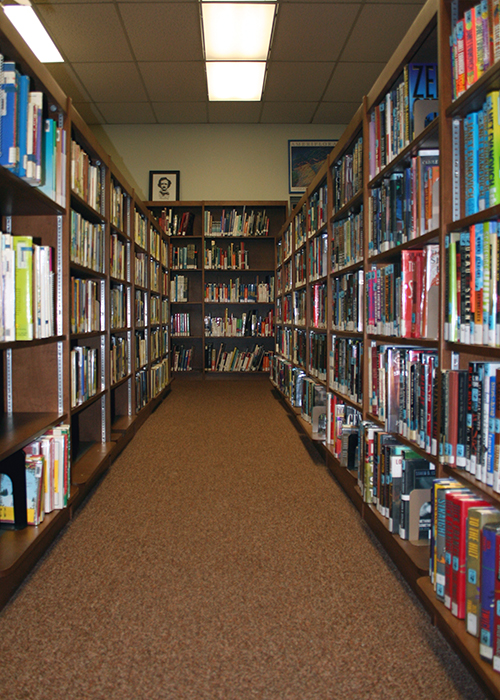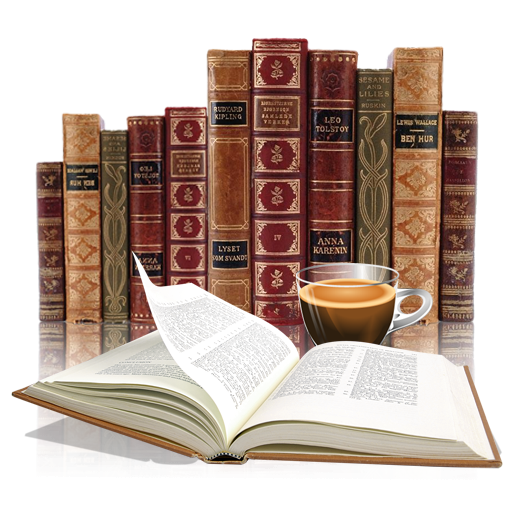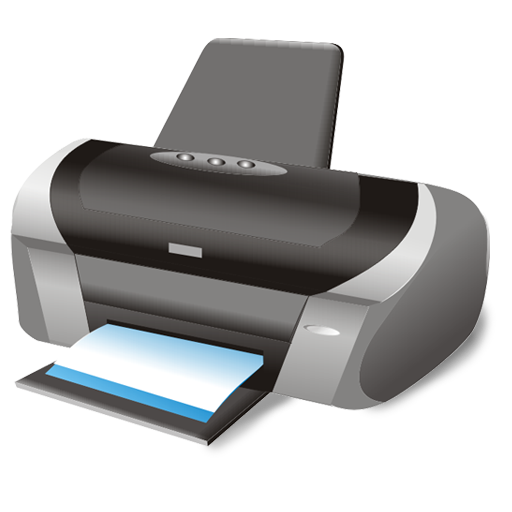

Blog
Welcome to the Busybird blog, where you can find helpful articles, updates, industry news and more. Make sure you stay up to date by signing up to our newsletter below.
20-20 Foresight
December 19, 2019This is the last blog for 2019!

Busybird is closing tomorrow, Friday 20th December, at 1.00pm, and will reopen Monday, 13th January, at 9.00am.
During the break, we want you to think about your writing.
Did you write the book that you wanted to write in 2019? If so, great! Fantastic! Well done!
Did you contribute a sizeable portion to its development? Excellent! Good on you! Keep it up!
Or did it just sit there, leaving you to think, Oh well – next year I’ll write it.
Hmmm.
Will you?
As a writer it’s important to understand what holds you back from dedicating yourself to your aspiration.
Here’s some things to ponder …
Pitch your book (content) in one or two sentences.
It’s amazing how many people don’t have a clear idea of what they’re going to write before they sit down to write. It’s fine if your content evolves in a different direction as you’re writing – at that point, you need to redefine your understanding of what you’re writing. But you can’t do that until you have an initial idea of what you’re attempting.
What is your market?
Have an idea where your book would fit in the market. You might think it’s trendy to have the first horror-slash-erotic-sci fi-cookbook, but publishers will want to know exactly where it sits, rather than in some nonexistent hybrid genre. As will booksellers. If you can’t place it, it’s unlikely they’ll take the chance.
At least know how you could pitch it specifically. This will also help with the previous point – how you see your content.
Why didn’t you write your book in 2019?
If your answer is that you steadily worked on your book throughout 2019, and keeping up the same pace in 2020 will see it finished, then you have a pass.
If your answer to not being able to write is TIME, then you need to be brutally honest about where that time went.
You can have legitimate reasons: business, kids, dialysis, etc.
But you can also have excuses: watching The Voice, re-upholstering the couch that didn’t need it, or doing anything that could’ve waited.
That sort of behaviour needs to be eliminated.
The Mathematics of Writing.
If you can manage only one hundred words every weekday, that’s five hundred words in one week. That’s two thousand words in one month. That’s twenty-four thousand words in a year.
Now this is using an extreme case where you write very little regularly, but it shows that writing a little daily does add up.
Don’t ever dismiss a little block of time as not enough time to write.
Persevere … Regardless.
Make sure you know when you’re going to write, and stick to that schedule. There will be times you don’t feel like it for whatever reason: tiredness, wrong headspace, lack of inspiration, etc.
Again, these all fall into the realm of excuses.
If you wait for perfect conditions, you will never write a single word.
Think of it like a job: if you were tired, in the wrong headspace, or lacking inspiration, would you stay home from work? Likelier, you’d go and push yourself through the day.
Writing is no different.
Get Educated.
If you feel you have shortcomings in your writing, get educated. Go study at a tertiary institution. Or do workshops. Or find a mentor.
All these are options where you’ll be exposed to stimuli that will fast-track your development – development that might otherwise take years, if it happens at all.
Write.
A book doesn’t get completed by talking about it. Sometimes, that’s all people do.
It’s understandable if you need research or some other contributing material, but sometimes you just need to sit down and go for it.
Identify whether you can’t go ahead because you need certain information, or if you’re just procrastinating.
Write Now.
Waiting for 2020 is just another excuse.
If you’re serious about writing, why wait?
Start now.
And don’t forget …
… we’re running our Pitch to Publish competition!
Pitch your book to us and you could win a publishing package worth $12,000!
Finally …
… the team here at Busybird Publishing would like to wish you all a Merry Christmas, and a happy, healthy, and prosperous New Year.
See you in 2020!
Your Voice Matters
December 5, 2019
When you read, you hear the narrative in your head.
The voice you hear won’t be the idealised version of your own – you know the one you hear in your head when you’re rehearsing what you’re going to say to somebody? Like if you’re preparing for an argument with an internet provider, or a dispute with a utility over a bill, or a plea to somebody (a partner, a child, a friend) to do something.
It won’t be the author’s actual voice. The bulk of the time, you won’t know what the author sounds like, and have no frame of reference to draw upon. And even if you know the author’s voice – say it’s somebody popular who’s done plenty of interviews and speaking engagements, such as Stephen King – that’s not the voice you hear.
And it’s not some proxy – some voice actor trained for speaking, such as you’d hear in an audiobook, or in a voiceover for a commercial.
It’s the voice of the writing itself: it’s about how the author phrases concepts, how they articulate ideas, how they pace their content, how the content unfolds, etc., and then moves into the abstracts of how the author explores those ideas, the choices they make, and how they interpret and articulate their thoughts – all these are different facets that blend together to produce a voice that is distinctly the author’s own.
Think of music as an analogy. The band Chicago produces a certain sound, while Bon Jovi produces another, Lady Gaga another, and so on. If a song comes on the radio you’ve never heard before, you may get an idea who the artist is by the song’s sound. This is often the case, regardless of the sort of song it is, or how the singer sings it.
The band Queen has ballads, pop songs, hard rock, etc., but you can always identify them as Queen. In their classic, ‘Bohemian Rhapsody’, the music and Freddy Mercury alternates from this haunting ballad, to an operatic interlude, to heavy rock, but the music is always distinctly Queen, and the vocals are always distinctly Freddy Mercury.
The same applies to authors, regardless what they’re writing or how they experiment. Stephen King’s known for supernatural horror, but has also written psychological horror (Misery, Gerald’s Game), fantasy (The Eye of the Dragon), and urban fantasy/western (The Dark Tower series), but the voice is always identifiable as Stephen King.
How YOU write produces a voice. How well you write and achieve what you’re attempting defines how good that voice is, and how sharp and clear it sounds in a reader’s head. You’re not always successful. Established bands still release albums that don’t do well. Well-known filmmakers still make bombs. And authors can still release books that don’t work – sometimes, it’s just by a matter of the smallest margin, but it’s enough.
What’s important is that you always strive for something to be the best it can be.
And you always strive to be YOU.
Voice is arguably the last thing writers develop, because it’s the concentration of everything else.
But it’s the most important, because it’s a representation of you as a writer, and the way you uniquely identify and portray yourself.
Your voice matters.
The Distribution of the Future
November 21, 2019Several weeks ago we blogged about The Publishing Landscape.

Somebody commented that the benefit of traditional publishing is the distribution, so getting a 7.5% traditional publishing royalty of something is better than a 100% self-publishing royalty of nothing.
This is an interesting statement.
But is it still applicable in today’s landscape?
Let’s break it down.
Distributors are Subcontractors
A distributor is a subcontractor who works to get books in stores. They can be retained by traditional publishers, self-publishers, and individual authors alike. The distributor will examine the merit of the book, it’s likelihood of being stocked, and its commercial viability. That’s their judgement criteria.
A distributor cannot guarantee that a bookshop will take on your book. Also, there have been cases where the distributor has gotten the book into one branch of a franchise, but not another.
The distributor is also not responsible for the marketing of the book to the greater market.
Publishers Have Various Distribution Means
Small publishers might distribute through a bigger publisher. A big publisher is likely to have a contract directly with a book chain, rather than employing a distributor. In these regards, a self-published author cannot compete, but that’s no different to any business: the big companies have more money to spend.
It’s not a level playing field out there. This is worth keeping in mind rather than having a generalised view that something is simply good or bad, and that having a distributor will magically generate sales.
Being Distributed Doesn’t Equal Success
Walk into any bookstore. What do you see?
Bestselling authors, celebrity books, and flavours of the month will occupy the prime real estate – that means they’ll sit face-out on a ‘Most Popular’ or ‘Bestsellers’ or ‘Recommended’ shelf. Every other book will sit spine out on general shelving. The bulk of bookstores are made up of these shelves.
If you’re a new author and a distributor manages to get you into a bookstore, you’re unlikely to get the prime real estate. Your book could become a bestseller. It happens. But think about the number of books released weekly. How many new authors break through and achieve that? It’s rare. Other authors have been toiling for years, and remain midlist. Due to a lack of sales, some just aren’t published anymore.
So although you might be distributed, it doesn’t mean your book is going to sit in a prime position. Those spaces are limited. The number of books being released grossly outnumber those spaces.
Now think about your browsing habits. Do you read the title on every spine-out book? Likelier, you read the first few and then skim, hoping to find a title that’ll attract your interest. At this stage, you’re not seeing the cover or the blurb – two other things that might attract you to a book.
Spine-out throws your book amongst the casual-browsing masses.
You Can Approach Independent Bookstores
Big chains mightn’t talk to the independent author, but smaller chains and bookstores will. They’re usually happy to help promote books. That’s their business. Bookstores local to you are likelier to do this, as they want to try help local authors. They might even offer a promotion, e.g. a book signing.
Some of you might be rolling your eyes, thinking this is why you need distribution. It shouldn’t be up to you to be selling your book.
It’s Not Really About the Distribution – It’s About the Marketing
Even if your book was sitting face-out on some ‘Most Popular’ shelf, there’s no guarantee it would sell in any meaningful numbers.
And the reason?
Let’s use movies as a parallel. We all know where to go to see a movie – the cinema. But why do we go? Because we know that’s a place that has movies? Well, usually no. We generally don’t randomly wander into a cinema and pick out a movie to see.
We actually go because we’ve gained an interest in a particular movie beforehand. That interest might’ve come from a trailer, a review, or word of mouth.
What’s happened here is that creating the awareness has generated your interest in the movie, and thus motivated you to go to the cinema and watch it.
It’s the same with books. Just because a book sits in a bookstore doesn’t mean it’s going to sell.
You need to create awareness and interest in your product before people will seek it out.
This is your responsibility. If you publish traditionally, the publisher will try to arrange interviews, reviews, and other promotional opportunities. But you’re just one of a number of authors in their stable, so you’re going to have to sell yourself.
But That Still Means You Need Distribution
Obviously, it’s going to be better to have distribution than to not have distribution. That increases your chances of creating awareness for your work.
And, yes, there will be the random sales here and there from somebody who’s browsing in a bookstore, picks up a book they’ve never heard of before, and buys it. But a whole lot of random sales aren’t how bestsellers happen. It’s about people knowing what they want and getting it.
Some might think this is still a case for distribution as we’ve known it – once people have learned of a book’s existence, they need to be able to go somewhere to get it.
But think about our changing landscape. Shoppers now break into one of four categories.
They:
- Go into a store and buy something
- Go into a store, find an item, then go online and buy it
- Go online and buy something
- Go online, and then try to find the item in a physical store.
Thirty years ago, if you wanted to shop you went to a store. That was your option the bulk of the time. There was no such thing as ‘online’. The closest option was buying something from an advert in printed material. But that’s target-specific marketing.
The internet has radically altered the landscape. Now you have four options. Doing things online occupies three out of those four choices – 75% of that 100%. Physical retailers also have online shopfronts. Why would I go to the trouble of getting in my car, driving to their store, and having a look around, when I can browse their online catalogue from the comfort of my own home?
Online shopping is becoming more and more common – and will continue to develop into the dominant option. It’s the default’s option for today’s youth. What will it be tomorrow?
Popular Australian chains like QBD and Robinsons have websites from which you can order. And, of course, there are popular online retailers like Amazon, Booktopia, or Book Depository.
Then there’s simply another option: ebooks. Order and have it delivered immediately to your reader.
Let’s go back to movies as a parallel. From 1980 to the early 2000s, we’d go to a videostore to rent a movie as a VHS cassette. Then DVDs took over. Then BluRays became a thing. And what happened next?
Now, we have mediums like Netflix, Stan, and Amazon Prime. We no longer have to go somewhere to get a movie. We just stream it directly to our television. Kids of tomorrow won’t even know what a VHS or DVD is.
The children of today are acclimating to a totally new landscape.
We Provide Distribution
We provide distribution so that your book filters into the databases of online retailers (Amazon, Booktopia, Book Depository, etc.), and will also appear on the databases of physical stores. If somebody was to go into a store and ask for your book, it would come up on that store’s computer. They could then order it. Sell enough, and the bookstore will stock it. But is this still the model for the future?
Kodak – once a giant in the realms of photography – famously misread the market and dismissed the advent of digital photography.
Technology moved forward and Kodak were left behind.
Now all we have is digital photography – on cameras, on computers, on tablets, and phones. It’s just a matter of time before smartwatches take pictures. Who knows what comes next?
The same applies to publishing. Stop thinking about the way things were done yesterday.
The landscape has changed.
And continues to evolve.
If you want to compete, you have to change with it.
Grandmothers of The Literary and The Paternal Kind
November 7, 2019
English poet Elizabeth Barret Browning once wrote I look everywhere for grandmothers and see none. A writer of the Victorian era, she spoke out against the lack of a female literary tradition that would give women of that era the courage and inspiration to be writers.
As a young woman living in the twenty-first century I am thankful that I have many ‘grandmothers of literature’ to look to for inspiration; but none have been more influential in my life as an avid reader, and now writer, than that of my own grandma.
My grandma was part of my literary journey from the very beginning. In my first years at school she would be the one to sit with me every night to listen to me read my readers. I would curl up on her lap in one of the soft loungeroom chairs, and she would patiently help me through difficult words, such as ‘hippopotamus’. We wouldn’t stop until I could read it fluently.
Then, every night before bed my sister and I would request a robin story from the English Women’s Weekly Grandma would order for the knitting patterns. As we curled up under the covers, she would bring the day to day troubles and adventures of the robin families to life.
It was also from my grandma I got my first taste of the classics.
Years before I could even attempt to read Jane Austen on my own, I was completely absorbed in her world though the BBC adaptions that lived in the VHS shelf. Sat by Grandma’s feet I was entranced by the story of Elizabeth and Mr Darcy in Pride and Prejudice. The romance, the comedy and the quick wit sunk into my child mind, even if I didn’t fully understand it all yet.
These formative experiences greatly influence my taste in literature.
It was with great joy that at fourteen I was finally able to crack open Grandma’s copy of the complete works of Austen to finally read Pride and Prejudice, Sense and Sensibility and Emma. That copy now lives in my bookshelf, a precious memento for the grandma who passed away only a few short years later when I was sixteen.
It is often one of my greatest regrets that my grandma didn’t lived long enough to see me pursue my passion as a writer, that she passed before I could talk to her about those stories she loved so much as an adult. But, while she may no longer be around to share her favourite stories with me, her influence still lives on through the extensive bookshelves my grandpa built for her.
Visits to my grandparent’s house have often lead to a discovery of Charlotte Bronte’s Jane Eyre, or Elizabeth Gaskell’s Cranford. The dusty hard covers and their particular old book smells brings her back to me, even if only for the duration of the story.
So, while Elizabeth Barret Browning may have looked everywhere for grandmothers and found none, I was lucky enough to have one who not only encouraged me, but lead me to the world of literary grandmothers who I look to for inspiration today.
Emily Whitehead
Editing Intern.
The Publishing Landscape
October 24, 2019We periodically put up blogs like this one to educate authors about the publishing landscape.
There are two legitimate streams of publishing:
- Traditional Publishing: you submit to a publisher. They will judge if (they believe) your book is worth publishing. If they accept you, they take all the financial risk to publish you. They will sign you to a contract, and oversee (and pay for) editing, design, printing, and marketing. You might get paid an advance (a small sum of money), or an advance against the royalties (a small sum of money that royalties have to pay off before you see more royalties) and royalties (a small percentage of each sale). For a new author, an advance might be around $1,000 – 5,000. Royalties uniformly will be around 7.5%, which means you get about $2 per book sold.
- Self-Publishing: you organise production of your book, and pay for whatever services you require. But you receive 100% of royalties (although if you get your book in bookstores, they will take a cut). You also keep 100% of the rights.
The murky model is the one where a publisher might claim they have an innovative new business model, and that they’ll share the cost of publication with you. The trade-off, they’ll tell you, is that you’ll get 50% of royalties, rather than just the 7.5%. Wow! That sounds awesome, right? And what makes all this so much more attractive is they tell you that your book is great, and that the market needs a book like yours.
The truth is these publishers will tell you anything to get your money. It’s doubtful they invest anything in your manuscript, other than hiring subcontractors (such as an editor and designer) who they underpay to perform their respective service. And yet this publisher gets to keep 50% of your royalties and 50% of your rights. That means if a traditional publisher wanted to pick you up, or if a film company wanted to turn your book into a film, this publisher would get a cut.
Most people want a traditional publishing deal. The benefits are the validation – a publisher telling you that your book is good enough for the market – and that they do everything to make your book a reality. As an aside, if a traditional publisher rejects you, it doesn’t necessarily mean your book isn’t good enough. Traditional publishers get it wrong all the time. The best example is Harry Potter, which was rejected umpteen times before it made it.
Self-publishing is becoming a viable alternative, as evolving technology has made it accessible and inexpensive. You could produce a book that looks identical to a book that comes out of a traditional publisher. The Martian by Andy Weir and Still Alice by Lisa Genova were both self-published, and became bestsellers, then became films with A-list actors. The difficulty with self-publishing is finding somebody you can trust, and who’ll guide you through the process.
These are the two routes. But here’s a much simpler way to break it down:
- Traditional Publishing: you pay nothing, the publisher oversees the production, and you get a small return.
- Self-publishing: you pay for everything, and you get 100% return, and keep 100% of the rights.
There is no other path. There is no in-between. The moment you pay anything to publish, you’re self-publishing. If you’re self-publishing, you should retain 100% of your royalties and 100% of your rights. There’s no rationale this type of publisher can offer you that validates any claim to these.
Now why do we blog periodically about this?
Because people are getting misled. People are getting ripped-off. People are spending hard-earned money because they’re being lied to and promised things (e.g. bestsellers, film adaptations) that no publisher can guarantee. Multimillion-dollar traditional publishers with all their resources can only take educated guesses at how a book will fare, so anybody else who makes these claims is a liar.
We get authors who think that all publishers operate under the same model (that’s exactly what they want you to think). We hear so many horror stories. We get authors ringing us in tears. We get authors asking if these sorts of deals are normal. We have authors berating themselves for their ignorance.
And it’s frustrating to see good people treated this way.
We have a lot of experience here. Our mandate is to help educate authors. We don’t want you being misled or ripped off. We want you to understand the landscape.
Whoever you publish with, it should be rewarding and gratifying and pleasurable.
So beware of the dangers.

